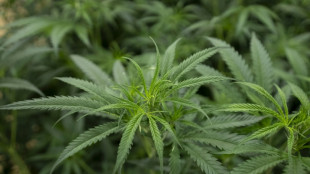
Americans eating (slightly) less ultra-processed food

Americans still get most of their calories from ultra-processed foods, but consumption is trending down among both adults and children, official data showed Thursday.
The survey results from the Centers for Disease Control and Prevention come as Health Secretary Robert F. Kennedy Jr. promotes diet reform -- and suggest that awareness of the risks around burgers and sodas may already have been taking hold before he came to office.
Between August 2021 to August 2023, the mean percentage of total calories consumed from ultra-processed foods (UPFs) among those aged one year and older was 55.0 percent.
That still places the United States at or near the top of the table globally, alongside countries like the United Kingdom and Canada.
Among Western nations, Italy consistently records lower UPF consumption -- less than 20 percent, according to a paper last year in Public Health Nutrition that credited the Mediterranean diet.
Breaking down the new US results by age, the percentage of energy consumed from UPFs was 61.9 percent for youths aged one to 18, and 53.0 percent for adults -- a decline from 65.6 percent and 56.0 percent respectively during the last survey period, 2017–18.
First Lady Michelle Obama spearheaded a campaign in the 2010s to encourage healthier eating and more exercise, while a landmark 2019 study in Cell Metabolism found people ate more calories when exposed to ultra-processed foods.
Ultra-processed foods tend to be "hyperpalatable, energy-dense, low in dietary fiber, and contain little or no whole foods, while having high amounts of salt, sweeteners, and unhealthy fat," according to the CDC.
They have been linked with ill health effects including higher risk of cardiovascular disease and all-cause mortality.
Sandwiches, including burgers, topped the list of UPFs for both US youth and adults, followed by sweet bakery products such as donuts. Sweetened beverages were high up on both lists.
Since taking office, Kennedy has launched a pressure campaign on industry to remove synthetic food dyes, which appears to be paying dividends, with cereal maker Kellogg's one of the latest brands to sign on.
A dozen states meanwhile have moved to restrict access of people with Supplemental Nutrition Assistance Program benefits -- known colloquially as food stamps -- to junk food at grocery stores.
S.Llorente--HdM

 London
London

 Manchester
Manchester
 Glasgow
Glasgow
 Dublin
Dublin
 Belfast
Belfast
 Washington
Washington
 Denver
Denver
 Atlanta
Atlanta
 Dallas
Dallas
 Houston Texas
Houston Texas
 New Orleans
New Orleans
 El Paso
El Paso
 Phoenix
Phoenix
 Los Angeles
Los Angeles



